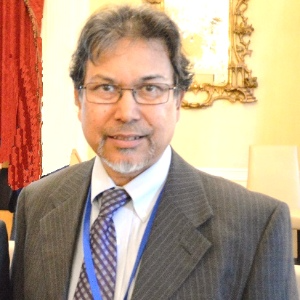Metals or minerals are substances that naturally occur beneath the Earth's surface. The majority of metals are lustrous or shining. Metals are inorganic, meaning they are formed of materials that have never been alive. Metals are natural components of the earth's crust that are present in the form of metal ores and are related with each other as well as a variety of other elements. They're also found in the rocks washed by surface and groundwater, as well as in air dust.
The metals and mining industry is responsible for locating and extracting metal and mineral reserves all over the world. Metals and minerals are mined for profit around the world and then used in jewellery, industrial applications, and investments. Mined minerals are utilised to build basic infrastructure (such as building frameworks) and generate electricity. They allow for the manufacture of existing green technology like electric vehicles, solar panels, and wind turbines, as well as the creation of new ones to address climate change's urgency.
Minerals are naturally occurring homogeneous solids having a specified chemical composition and a highly organised atomic arrangement that are generated by inorganic processes. There are thousands of mineral species known, but only around 100 of them comprise the primary mineral components of rocks; these are known as rock-forming minerals. Mining is the process of extracting valuable resources from the earth. Mining, while providing numerous valuable minerals, has the potential to harm both people and the environment.
A substance or mixture of substances that makes up an object is called a material. Pure or impure materials, as well as living and non-living things, can be used. Physical and chemical qualities, as well as geological origin and biological purpose, can all be used to classify materials. The study of materials and their applications is known as materials science. Purification, shaping, and the introduction of other elements can all be used to modify the qualities of raw materials. Synthetic methods can be used to create new materials from raw materials. Materials are used as inputs in manufacturing processes to create goods or more complicated materials in industry.
- Mineral Raw Materials
- Mining & Metals in a Sustainable World
- Applications

Ephraim Suhir
Portland State University, United States
Thomas J Webster
Interstellar Therapeutics, United States
Robert Buenker
University of Wuppertal, Germany
Will Skene
Montreal University, Canada
Valeriy A Buryachenko
Micromechanics & Composites LLC, United States
Anis Rahman
Applied Research & Photonics, Inc, United States
Will Skene
Montreal University, Canada
Robert Guidoin
Laval University, Canada
Robert Buenker
University of Wuppertal, Germany


Title : Introducing picotechnology: An exciting extension of nanotechnology
Thomas J Webster, Interstellar Therapeutics, United States
Title : The failure of both einsteins space-time theory and his equivalence principle and their resolution by the uniform scaling method
Robert Buenker, University of Wuppertal, Germany
Title : Material challenges with proton conducting ceramics for intermediate temperature hydrogenation/dehydrogenation applications
Saheli Biswas, Commonwealth Scientific and Industrial Research Organisation, Australia
Title : Porphyrin layers at metal-electrolyte interfaces monitored by EC-STM and CV
Marek Nowicki, University of Wroclaw, Poland
Title : Color control of electrochromes by structural modification
Will Skene, Montreal University, Canada
Title : Make experiments more efficient: Two simple and powerful approaches. Mg2Si growth for photovoltaic and thermoelectric applications
Alexander S Gouralnik , Institute of Automation and Control Processes, Russian Federation
Title : Reconfigurable antenna structures using tunable materials
Nasimuddin, Institute for Infocomm Research, Singapore
Title : (0, 1 and 2) Dimensional hybrid architecture of the synthesized materials leads the smart sensing of the gaseous species at low/room temperature
D R Patil, North Maharashtra University, India
Title : Enhanced grain refinement, precipitates regulation, and improved mechanical properties of cast Al-Li alloy by Ti addition and heat treatment
Lixiong Shao, Shanghai Jiao Tong University, China
Title : Broadband sound attenuation of shape memory polymer with triangular-honeycomb unit cell metamaterial structural design
Musaab Ejaz, Universiti Teknologi PETRONAS (UTP), Malaysia